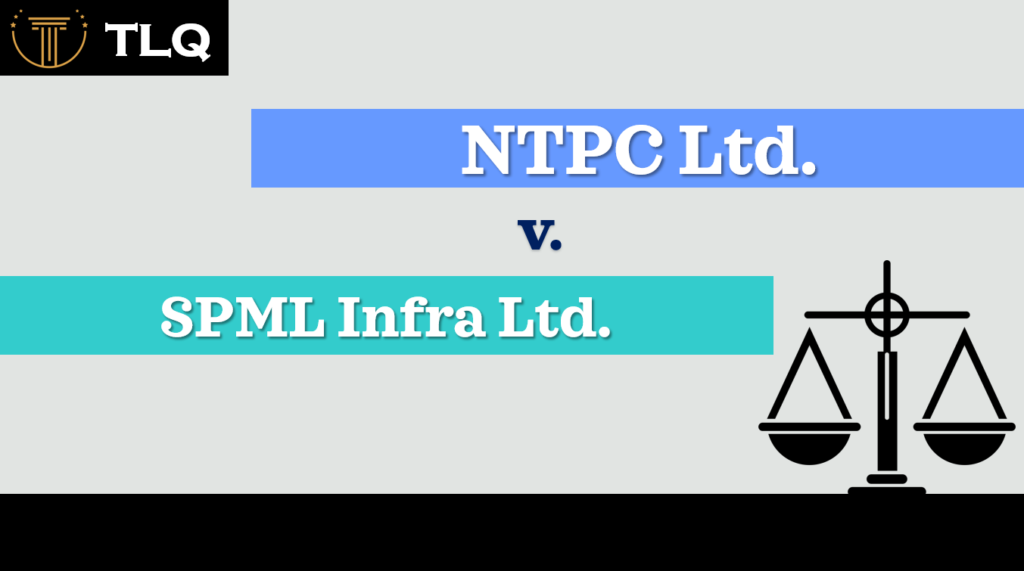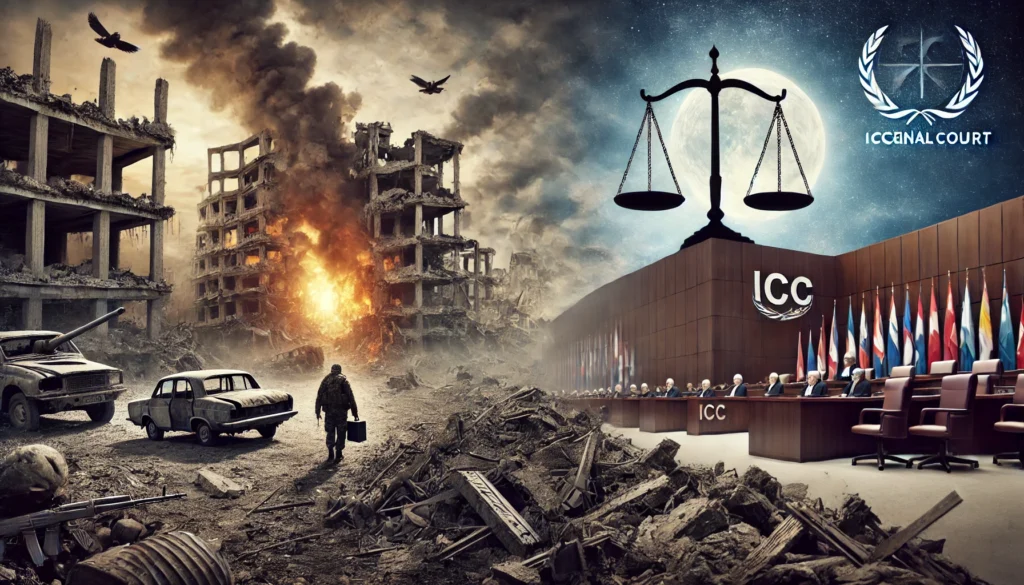Published On: September 30th 2025
Authored By: Sabari Manisha
Chennai Dr Ambedkar Government Law College Pudupakkam
Abstract
Genocide stands among the most heinous violations of international law, representing the calculated destruction of an identifiable group be it national, ethnic, racial, or religious. The concept, coined in 1944 by jurist Raphael Lemkin, gained global legal recognition through the Convention on the Prevention and Punishment of the Crime of Genocide adopted by the United Nations in 1948. This landmark treaty criminalises genocide in both wartime and peacetime, placing a legal duty on States to act against it. The Convention articulates the offence’s defining features, including the necessity of a special intent (dolus specialis), and affirms that culpability extends to individuals in positions of authority as well as private actors. This study explores the scope of the Convention, its enforcement through international tribunals and national jurisdictions, and the persistent obstacles that hinder the eradication of this crime.
Keywords: Genocide, Convention on prevention and punishment of Genocide, international tribunals, national jurisdiction
Introduction
The Convention on the Prevention and Punishment of the Crime of Genocide (hereinafter “Genocide Convention”), adopted by the United Nations General Assembly on 9 December 1948, represents the first international human rights treaty to codify genocide as a crime under international law. It was a direct response to the atrocities committed during the Second World War, particularly the Holocaust, and sought to ensure that such crimes would “never again” occur. The Convention not only defines genocide but also imposes legal obligations on States to prevent and punish it, whether committed in times of peace or war.[1]
Article I of the Convention affirms that genocide, whether committed in peacetime or wartime, is a crime under international law, binding States to undertake measures for its prevention and punishment.[2]The definition provided in Article II outlines specific acts—such as killing members of a national, ethnic, racial, or religious group, or causing serious bodily or mental harm to them—when committed with the intent to destroy such a group in whole or in part.[3] This definition has since served as the legal benchmark in prosecutions before international tribunals, including the International Criminal Tribunal for Rwanda (ICTR) and the International Criminal Tribunal for the Former Yugoslavia (ICTY).
The Convention is notable for establishing both a moral and legal framework. While moral outrage over atrocities has often galvanized international opinion, the Convention transforms that sentiment into enforceable legal obligations. By linking prevention with punishment, it recognizes that accountability is essential for deterrence. Yet, despite near-universal ratification, challenges in enforcement persist, with political interests and evidentiary burdens frequently hindering timely intervention. This tension between aspiration and implementation continues to shape discourse on international criminal justice.
Background and Evolution
The concept of genocide, though not formally codified until the mid-20th century, has deep historical roots in mass atrocities committed against targeted groups throughout history. It was the unprecedented scale and systematic nature of the Holocaust during the Second World War that catalyzed the modern legal framework for its prevention and punishment. The Polish-Jewish jurist Raphael Lemkin first coined the term “genocide” in 1944, combining the Greek word genos (race or tribe) and the Latin -cide (killing), to describe the deliberate destruction of a national, ethnic, racial, or religious group as such.[4]
The devastation of the Holocaust and other wartime atrocities galvanized the international community to act. In 1946, the United Nations General Assembly (UNGA) passed Resolution 96 (I), affirming genocide as a crime under international law and directing the drafting of a binding treaty.[5] This culminated in the adoption of the Convention on the Prevention and Punishment of the Crime of Genocide (“Genocide Convention”) on 9 December 1948, which entered into force on 12 January 1951.[6]The Convention, under Article II, defined genocide and under Article I affirmed the obligation of States Parties to prevent and punish the crime, whether committed in time of peace or war.[7]
Since its adoption, the interpretation and enforcement of the Genocide Convention have evolved through both judicial and institutional developments. The establishment of the International Criminal Tribunal for the former Yugoslavia (ICTY) in 1993 and the International Criminal Tribunal for Rwanda (ICTR) in 1994 marked significant milestones in the prosecution of genocide, clarifying elements such as dolus specialis (specific intent) and the scope of protected groups.[8] The Rome Statute of the International Criminal Court (ICC), adopted in 1998, further incorporated genocide as one of the four core crimes under its jurisdiction, signaling the Convention’s enduring influence on contemporary international criminal law.[9]
Definitional Scope under the Convention
The 1948 Convention on the Prevention and Punishment of the Crime of Genocide provides the authoritative definition of genocide in international law. Under Article II, genocide is defined as any of the following acts committed with intent to destroy, in whole or in part, a national, ethnical, racial, or religious group as such: (a) killing members of the group; (b) causing serious bodily or mental harm; (c) deliberately inflicting conditions of life calculated to bring about physical destruction in whole or in part; (d) imposing measures intended to prevent births; and (e) forcibly transferring children of the group to another group. The actus reus (material acts) must be accompanied by the dolus specialis—the special intent to destroy the protected group. Article III extends the scope of punishable conduct to conspiracy, direct and public incitement, attempt, and complicity in genocide, making the offence one of the most comprehensively regulated in international criminal law.[10]
Challenges in Proving Genocide
While the Convention sets out a clear legal definition, proving genocide in judicial proceedings remains a complex task. The principal difficulty lies in establishing the dolus specialis—the specific intent to destroy, in whole or in part, a protected group. This intent is rarely expressed explicitly, requiring courts to infer it from patterns of conduct, scale of atrocities, and contextual factors.[11]The International Criminal Tribunal for Rwanda (ICTR) in Prosecutor v. Akayesu held that intent could be deduced from systematic targeting and the general context of the acts.[12]However, the threshold for proof is high, as demonstrated in the International Court of Justice’s Bosnia and Herzegovina v. Serbia and Montenegro, where the Court found that widespread killings in many municipalities did not, on their own, prove the specific intent for genocide.[13]
Further challenges arise from the evidentiary requirements. Genocide often occurs during armed conflict or in conditions of state repression, where access to witnesses, documents, and forensic evidence is restricted. The destruction of evidence, intimidation of survivors, and displacement of communities impede the collection of reliable testimonies.[14]Additionally, political considerations can affect prosecutions, as states may resist recognising atrocities as genocide due to diplomatic consequences. These hurdles collectively contribute to the low number of successful genocide convictions in comparison to the scale of alleged occurrences.
Crimes and Genocide
The crime of genocide occupies a unique position within the framework of international criminal law. While it shares certain characteristics with crimes against humanity and war crimes such as mass violence, widespread suffering, and systematic targeting , its defining element is the intent to destroy a protected group in whole or in part. This special intent, or dolus specialis, elevates genocide to the “crime of crimes,” as described in jurisprudence of the International Criminal Tribunal for Rwanda (ICTR).
Article III of the Genocide Convention[15] broadens the ambit of criminal liability beyond the act of genocide itself, encompassing conspiracy, direct and public incitement, attempts, and complicity. By criminalising preparatory and incitement acts, the Convention seeks to address the danger of genocidal campaigns before mass killings or mass harm reach their peak. This preventive orientation distinguishes genocide from many other international crimes, which typically focus on completed acts.
The distinction between genocide and crimes against humanity is particularly important in judicial practice. Whereas crimes against humanity require proof of a widespread or systematic attack against civilians, genocide demands the added mental element of destruction of a specific group.[16] The International Court of Justice (ICJ), in Bosnia and Herzegovina v. Serbia and Montenegro, underscored that not all mass atrocities, however grave, meet the legal threshold of genocide precisely because of this stringent intent requirement.
This dual nature extreme moral gravity and rigorous evidentiary standard has shaped both the rarity of convictions and the profound symbolic weight carried by genocide prosecutions. Cases such as Prosecutor v. Akayesu (ICTR) and Prosecutor v. Krstić (ICTY) have not only clarified the scope of genocidal acts but have also established the principle that both state and non-state actors, including individuals in positions of command or influence, can be held criminally liable. In this way, the Convention integrates the prevention of genocide into the broader architecture of international peace and security.
Legal accountability faces persistent obstacles globally due to political resistance, evidentiary challenges, and limited cooperation, hindering effective enforcement of genocide prevention and prosecution under international law.
International Enforcement Mechanisms
The legal architecture supporting genocide prevention and criminal accountability is extensive, comprising not only the 1948 Genocide Convention but also a broader network of human rights, humanitarian law, and specialized frameworks. These instruments include the International Covenant on Civil and Political Rights; the International Covenant on Economic, Social and Cultural Rights; the Convention against Torture; the Convention on the Rights of the Child; various anti-discrimination treaties like the Convention on the Elimination of All Forms of Racial Discrimination and the Apartheid Convention; and justice-focused instruments such as the Convention on Statutory Limitations for war crimes and crimes against humanity. Collectively, they generate legal obligations that reinforce the Genocide Convention, enhance early-warning systems, and support enforcement capacities at both state and international levels.[17]
India’s Legislative Gap on Genocide and Genocidal Speech[18]
India lacks specific legislation addressing genocide and incitement to genocide despite being a party to the 1948 Genocide Convention. While the Convention criminalizes direct and public incitement to commit genocide and obligates States to enact laws giving effect to its provisions, India relies primarily on general hate speech laws under the Indian Penal Code (IPC). These laws criminalize speech that promotes enmity between groups but do not distinguish genocidal incitement, the most egregious form of hate speech deserving independent legal recognition. Penalties under India’s hate speech provisions, limited to fines or imprisonment up to three years, are insufficient to deter genocidal speech or reflect its severity.
India’s dualist approach to international law means that treaty obligations, like those under the Genocide Convention, require domestic legislation to be enforceable. The Supreme Court has occasionally invoked treaty principles to interpret fundamental rights but has not recognized genocide as a standalone offence in domestic law. Consequently, prosecutions under current laws fall short of fulfilling India’s obligations under Articles I, III(c), and V of the Convention.
The International Court of Justice’s Bosnian Genocide ruling underscored the duty of States to exercise “due diligence” in preventing genocide by adopting all possible measures, including legislative action. India’s failure to enact specific genocide laws weakens law enforcement’s ability to respond effectively to genocidal speech, which has seen a worrying rise recently, particularly against Muslim communities.
Conclusion
The Holocaust, known in Hebrew as the Shoah, stands as the most horrific genocide in history, where approximately six million European Jews were systematically exterminated by Nazi Germany and its collaborators between 1941 and 1945. Genocide, at its core, is the deliberate mass killing driven by hatred towards a specific group. In the Indian context, while there have been communal conflicts marked by religious and ethnic violence, India lacks specific legislative provisions addressing genocide and genocidal speech, which poses serious risks of impunity. The failure to distinctly criminalize genocidal acts and incitement undermines India’s obligations under the Genocide Convention and weakens preventive mechanisms. Given the increasing instances of hate speech targeting vulnerable communities, there is an urgent need for India to adopt a clear legal framework specifically addressing genocide and its incitement. Such legislative reform would empower law enforcement, uphold international legal commitments, and contribute to safeguarding India’s diverse social fabric from the scourge of genocidal violence.
References
[1]United Nations Office on Genocide Prevention, ‘Definition’ (United Nations) https://www.un.org/en/genocideprevention/definition accessed 9 August 2025.
[2]United Nations, Convention on the Prevention and Punishment of the Crime of Genocide, art I (9 December 1948) https://www.ohchr.org/en/instruments-mechanisms/instruments/convention-prevention-and-punishment-crime-genocide accessed 9 August 2025.
[3] ibid art II.
[4]Raphael Lemkin, Axis Rule in Occupied Europe: Laws of Occupation, Analysis of Government, Proposals for Redress (Carnegie Endowment for International Peace 1944).
[5] UNGA Res 96 (I) (11 December 1946) UN Doc A/RES/96(I).
[6]Convention on the Prevention and Punishment of the Crime of Genocide (9 December 1948) 78 UNTS 277.
[7] Supra 2
[8] Prosecutor v Krstić (Appeal Judgment) ICTY-98-33-A (19 April 2004) paras 33–34.
[9]Rome Statute of the International Criminal Court (adopted 17 July 1998, entered into force 1 July 2002) 2187 UNTS 90 art 5.
[10] Supra 2
[11]William A Schabas, Genocide in International Law: The Crime of Crimes (2nd edn, Cambridge University Press 2009) 240–245.
[12]Prosecutor v Akayesu (Trial Judgment) ICTR-96-4-T (2 September 1998) para 523.
[13] Application of the Convention on the Prevention and Punishment of the Crime of Genocide (Bosnia and Herzegovina v Serbia and Montenegro) (Judgment) [2007] ICJ Rep 43, paras 186–190.
[14] Robert Cryer and others, An Introduction to International Criminal Law and Procedure (4th edn, Cambridge University Press 2019) 272–274.
[15] Supra 2
[16] Denys Azarov and others, ‘Understanding Russia’s Actions in Ukraine as the Crime of Genocide’ (2023) 21 Journal of International Criminal Justice 233. https://academic.oup.com/jicj/article/21/2/233/7197410?login=false
[17]United Nations Office on Genocide Prevention and the Responsibility to Protect, ‘Legal Framework of Genocide and Related Crimes’ (United Nations) https://www.un.org/en/genocide-prevention/legal-framework accessed 9 August 2025.
[18]Abhijeet Shrivastava, ‘How India’s Legislation Risks Impunity for Genocidal Speech’ Völkerrechtsblog (22 July 2022) https://voelkerrechtsblog.org/how-indias-legislation-risks-impunity-for-genocidal-speech/ accessed 9 August 2025.




